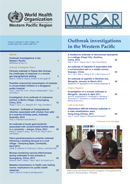Risk assessment of human infection with a novel bunyavirus in China
DOI:
https://doi.org/10.5365/wpsar.2012.3.4.002Abstract
Objective: To assess the public health risk of human infection from a novel bunyavirus – severe fever with thrombocytopenia syndrome virus (SFTSV) – in China.
Methods: The likelihood of disease spread and the magnitude of public health impact were assessed to clarify overall risk. Literature about hazard, exposure and contextual factors associated with SFTSV infection was collected and reviewed. Information on SFTSV cases and the population in six provinces under surveillance was compared.
Results: SFTSV is a member of the Phlebovirus genus of the Bunyaviridae family. A widely distributed tick species, Haemaphysalis longicornis, can act as the vector; thus the disease is likely to spread in China. Symptoms of SFTSV infection are nonspecific, but have led to multiorgan dysfunction in severe cases. High-risk populations include farmers and older females. Evidence of human-to-human transmission within family and hospital has been reported. The capacity for treatment and diagnosis of SFTSV are adequate in rural communities in China, and community awareness of the disease should be high.
Discussion: There is a low to moderate public health risk related to SFTSV human infection in China. There is potential for an increase in the number of cases reported as awareness increases and when surveillance is expanded.

